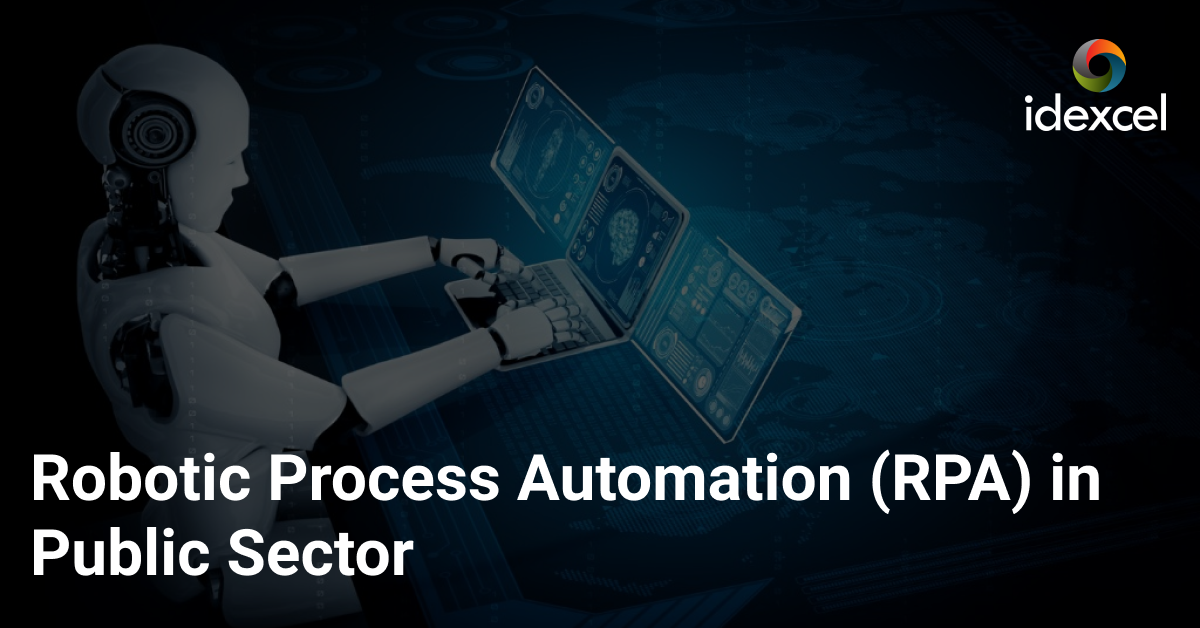While the journey of Digital Transformation within the Private Sector has more tangible drivers (i.e. efficiency, profit, etc.) along with immediate results, the same in the Public Sector involves additional aspects owing to the involvement of factors such as public data, data security, and accessibility of the transformed service.
After taking the path of digitization of paper-based processes, many governments have now shifted focus to a whole-organization approach i.e. to digital, or have at least recognized the need. But is the public sector also ready to focus on taking a step towards adopting digital workers (RPA bots) to leverage their existing processes?
Robotic Process Automation (RPA) enables organizations to free up employee capacity to focus more on areas where complex problem solving or human judgment is required.
Challenges Faced by the Public Sector that can be addressed by RPA
The Government workspaces often grapples with:
- a growing backlog of work, and limited capacity to tackle the same
- hiring freezes or headcount reductions due to budget constraints
- a pile up of caseloads (viz. forms and processes)
- frequent policy changes that need to be integrated into business practices
Taking a step forward in transforming the legacy approach to tasks is something that the public workspaces are hesitant about. Many will say that the organization is not yet ready to accept technological trends, others just really don’t know where to kick off. The best possible solution to such stumbling blocks is to consult with the industry’s leading experts.
Bot in Action
According to the world economic forum, by 2022, robots (digital workers) will perform 40% of the tasks. RPA specializes in handling day-to-day, rule-based tasks. In an RPA solution, robots can mimic the majority of the user actions, work 24*7 and help improve process accuracy and speed. Also, this automation is cost-effective and helps in maximizing the overall efficiency across the organization.
Where to Begin?
In this environment of unprecedented budgetary pressures and rising demands over public services, where more is increasingly demanded from less, advances in robotics have made automation a viable and innovative way to address the current challenges faced by the Public Sector.
RPA Application in Government and Public Sector
RPA can easily handle tasks such as:
- Document Handling and Validation
- Reconciliation and Reporting
- Form Processing
- Financial Management and Audit Trails
- HR Tasks
As per a case study conducted by Deloitte in the Government Sector, RPA implementation could span across various sectors, but not limited to:
Federal Government: Benefits and Tax Calculations, Anti-Fraud Checks
Local Government: Case Management, Permit Applications
Health: Diagnostics, Discharge Processing
Education: Admissions and Enrollment, Student Finance Management
Policing: Automation of Traffic Offences, Completion of Character Enquiries, Crime Reporting Support, Audit of Intelligence Systems and aid the fight against Cyber-Crime.
Automating administrative tasks empowers officers and staff, giving them more time on the frontline.
Identifying Potential Processes to Automate
RPA solutions can be applied to any business process that meets the criteria given below. They should:
- Be rules-driven
- Be repetitive in nature
- Be performed out of office hours
- Involve data manipulations, such as calculations
- Be data intensive
- Be electronically triggered
- Have a high human error rate, and
- Include reconciliations
As per the RPA bot building standards, organizations can start off by picking any small mundane task within the department. Let the RPA experts automate them and then witness the digital workers in action. The possibilities are endless once the notion is set such that this digital transformation is the need for the hour.
Well, now it’s time to step up and work towards having digital workers on board!
